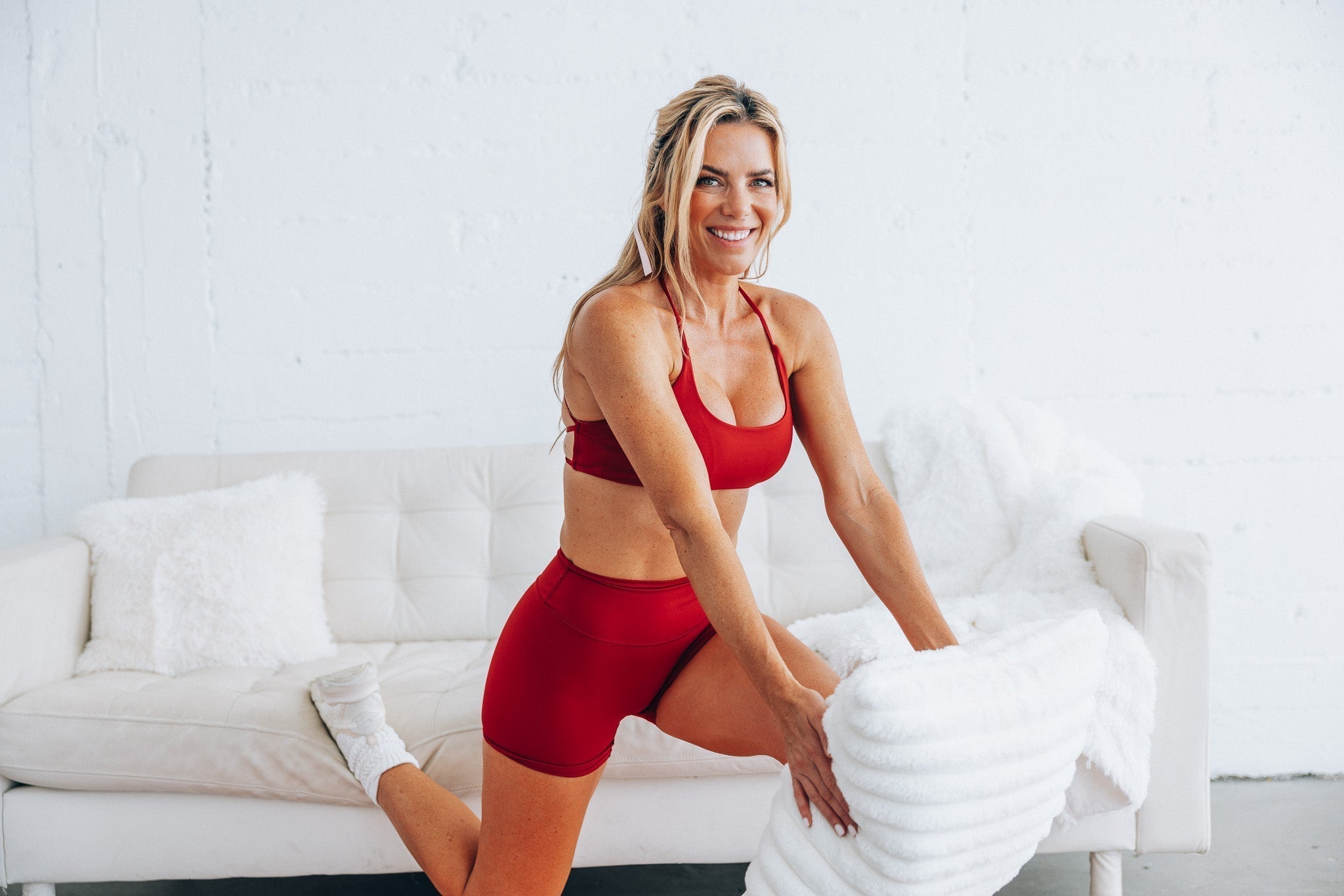Stress has a way of creeping in when you least expect it—and it doesn’t choose favorites. That’s why it’s important to make space for rest and reset, just like you do for movement and exercise. Stress relief isn’t just about escaping tough moments; it’s about building healthy habits that help you stay grounded, focused, and energized.
The best part? You don’t need special equipment or a huge amount of time. Even a few quiet minutes can help calm your nervous system, shift your mindset, and improve how you feel throughout the day.
In this article, we’re exploring simple, effective stress relieving activities that anyone can try, whether you’re at home, at work, or in between errands. Let’s dive into some of the most effective ways to melt stress and reinvigorate your daily routine.
Why Is Stress Relief Important?
When we experience stress, our bodies go into “fight or flight” mode. Your cortisol spikes, the heart rate increases, and muscles tense up.
This can be helpful in short bursts, but chronic stress—prolonged cortisol spikes—can take a toll on our sleep, energy levels, digestion, focus, and even our relationships. The good news is, there’s an antidote.
Activities that support your well-being can help calm your nervous system, lower cortisol levels, and bring you back to a more balanced state. And the more regularly you practice stress-relieving habits, the more resilient you become in the face of daily pressures.
Movement-Based Stress Relievers
Sometimes the best way to calm your mind is to start with your body. Movement can help release built-up tension, boost mood-lifting endorphins, and reconnect you to the present moment.
Whether you’re looking for a quick reset or a full workout, these movement-based stress relievers are powerful tools for your mental and physical well-being.
Walking
Walking is one of the most accessible forms of stress relief, and it works. This simple, low-impact movement boosts circulation, supports cardiovascular health, and gives your mind a chance to decompress.
A walk outdoors offers bonus benefits: sunlight, fresh air, and a break from screens. Even a quick 10-minute stroll around the block can take stress down a notch.
For bonus points, leave your phone at home and notice the colors, sounds, and sensations around you. These small moments of mindfulness can shift your mood and ready you for the rest of your day.
Stretching
Stretching isn’t just good for flexibility, it’s also a gentle invitation for your body to relax. As muscles lengthen and release, your nervous system responds by slowing down, helping you feel more at ease.
Post-workout or bedtime is a great time to add stretches into your routine, but even a few minutes during the day can offer relief. Focus on areas where tension tends to build up—like your neck, shoulders, and hips—and breathe slowly as you move.
Try a sequence with neck rolls, shoulder circles, forward folds, and spinal twists.
Group Fitness Classes
There’s a unique energy that comes from moving with others. Group fitness classes provide structure, support, and a sense of community that can melt stress instantly.
Whether you prefer high-energy formats like cycling or dance, or slower-paced classes like yoga and stretch, the shared rhythm and encouragement help you stay present and feel connected.
Plus, having an instructor guide you means you can just show up and let the movement carry you. It’s a great reminder that you don’t have to do everything alone.
Foam Rolling
Think of foam rolling as a self-care ritual for your muscles. This practice helps release knots and tightness, improve circulation, and support recovery, while also giving your brain a moment to slow down.
Foam rolling doesn’t have to be intense or time-consuming. Even 5 minutes spent gently rolling out your back, hamstrings, or calves can reduce tension and help you feel more comfortable in your body.
Try it after a workout, during a cooldown, or anytime you feel like your body is holding onto stress.
Casual Jogging or Dancing
You don’t need to train like an athlete to benefit from movement. A light jog through your neighborhood or a spontaneous dance break in your kitchen can do wonders for your mood.
Both activities elevate your heart rate, release endorphins, and offer a healthy outlet for physical and emotional energy. Dancing taps into joy and expression, no choreography required.
The next time you feel overwhelmed, try putting on your favorite playlist and letting your body move however it wants. It’s not about performance—it’s about release.
Stress Relief Doesn’t Have to Be Complicated
It’s easy to assume you need an hour-long meditation retreat or a full spa day to relax. But stress relief isn’t about going big. It’s about being consistent and kind to yourself in the little moments.
Here are some creative, low-effort ways to fit stress relief into your day:
- Foam roll for 3 minutes while watching TV
- Take three deep breaths before your next Zoom call
- Put on your favorite song and dance while making dinner
- Step outside for fresh air after a long meeting
- Do a quick stretch in between errands
Every small step adds up. You don’t need fancy gear or a perfect mindset. You just need a little intention and a willingness to pause.
Overcoming Common Assumptions
When it comes to stress relief, a few common myths can make it feel harder than it needs to be. Let’s take a moment to challenge those assumptions—because finding your calm should feel supportive, not stressful.
“My schedule’s too packed.”
This is one of the biggest misconceptions about stress relief. You don’t need a 60-minute routine or a quiet mountain retreat to feel better. Start with just two minutes.
Take a few deep breaths between meetings, stretch while your coffee brews, or close your eyes for a short mental reset.
These tiny moments of care add up, and they’re often more effective than we give them credit for. The key is showing up for yourself in small, doable ways.
“I’m not good at relaxing.”
Here’s the truth: there’s no such thing as being “bad” at relaxation. It’s not a performance or a competition—it’s about noticing what helps you feel a little more grounded, calm, or present.
Your breathing might be shallow some days, your mind might wander, and that’s okay. If a technique feels even a little helpful, then it’s working. Give yourself permission to explore without pressure.
“I’m not the type of person who does this stuff.”
There is no one-size-fits-all image of someone who practices stress relief. You don’t need to fit a certain mold or vibe to benefit from relaxation.
Maybe your version is journaling, gardening, walking your dog, or foam rolling after a workout. It all counts.
What matters most is that it supports you—your energy, your goals, and your well-being. Stress relief is personal, and you get to define what it looks like.
Build Your Personal Stress Relief Toolkit
Finding your own rhythm is the key to making stress relief sustainable. Just like building a fitness routine, managing stress is most effective when it fits your lifestyle and feels genuinely enjoyable.
The goal is to discover activities that help you feel more grounded, present, and supported. Notice what makes a difference, even if it’s subtle. When something feels helpful, make a mental note (or write it down!) so you can return to it on tough days. Building a personal toolkit of stress-relief activities gives you something to lean on when life feels overwhelming.
Here’s how to create a routine that sticks:
- Keep it simple – Choose one or two activities you enjoy and start there. You don’t need a long routine or a full hour to see benefits, just a few intentional minutes can help. The goal is to build habits that feel natural and doable in your daily life.
- Be flexible – And we don’t mean in your yoga poses. Let your energy and mood guide your daily stress-relief activity: Some days you might crave a high-energy group class, while others may call for a quiet walk. Listening to what your body and mind need is a powerful way to start.
- Stay curious – Try new things, even if they feel unfamiliar or a little awkward at first. You might discover that journaling calms your thoughts or that foam rolling helps you reset between tasks.
- Check in with yourself – Your needs will change over time, and that’s totally normal. What helps today might not be what you need next week. Taking a moment to reflect regularly can help you adjust and stay in tune with your own well-being.
Find Simple Ways to Unwind with Chuze
Stress is part of life, but it doesn’t have to run the show. The good news? You don’t need fancy equipment, hours of free time, or a specific routine to feel better. A few deep breaths, a short walk, a quiet moment after your workout—these simple actions add up to wellness.
At Chuze Fitness, we believe that caring for your mental well-being is just as important as building physical strength. That’s why we’re here to support your full wellness journey, not just the part that happens on the gym floor.
Whether you’re stretching it out after a group fitness class, foam rolling between meetings, or dancing it out in your living room, stress relief should feel doable, not like another task on your list. Explore what works for you, stay curious, and give yourself permission to press pause when you need it. You don’t have to get it “perfect,” you just have to start.
Sources:
Healthline. 11 Natural Ways to Lower Your Cortisol Levels. https://www.healthline.com/nutrition/ways-to-lower-cortisol
Healthline. What Are the Benefits of Foam Rolling? https://www.healthline.com/health/foam-roller-benefits
National Library of Medicine. Walking – the first steps in cardiovascular disease prevention. https://pmc.ncbi.nlm.nih.gov/articles/PMC3098122/







